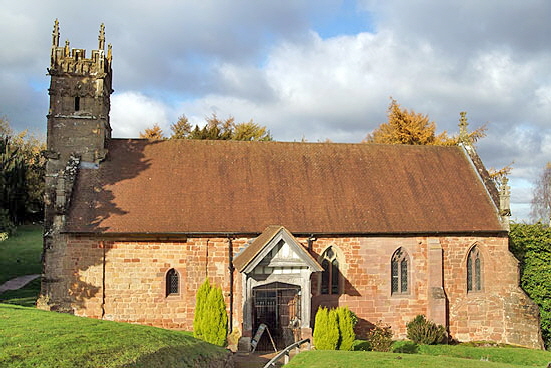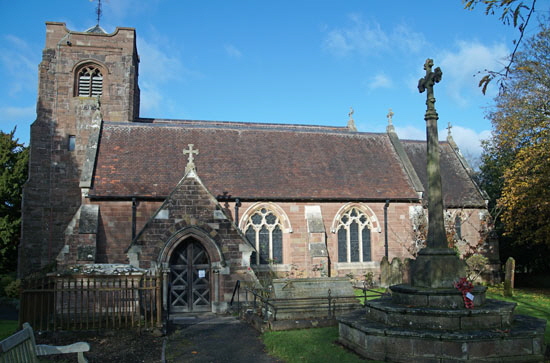|
|
||||||||||||||||||||||||||||||||||||||||||||||||||||||||||
|
Please sign my Guestbook and leave feedback |
||||||||||||||||||||||||||||||||||||||||||||||||||||||||||
|
Recent Additions |
||||||||||||||||||||||||||||||||||||||||||||||||||||||||||
|
|
||||||||||||||||||||||||||||
|
it, rather hedges his bets. He sees many features of the Herefordshire School in the tympanum talks about “the tympanum relates closely to the Herefordshire type...the Pedmore angel is a starched version of the vigorous Rowlestone angels”. starched version of the Rowlestone angel...”. The italics are mine. I don’t know what to make of all this. The tympana are four miles apart, and surely likely to have been carved by the same “rustic imitator”. Is Malcolm too respectful of the later George Zarnecki to suggest he was wrong about Romsley? Pevsner is no better. He talked of Romsley’s “bad but impressive tympanum” and says “the ribbed draperies (of the angel) are inspired by the Herefordshire School. He said Romsley’s exterior sculpture of a saint was “bad” too. Of Pedmore’s tympanum he said “Crude but impressive close in style to the Herefordshire School”. He’d been reading Zarnecki as well, hadn't he? Oddly, he did not apparently see the very obvious similarity between the two. So the opinion of this great triumvirate of experts (no irony intended here - they were) is/was that the tympana were not the real deal but in the case of Thurlby I sense he’s not so sure about Pedmore. I reckon Pedmore’s tympanum is of the Herefordshire School and if it is then Romsley’s probably is as well. In all of this, I sense a degree of excessive reverence for the two - there are only two - “named” sculptors of the Herefordshire School, the so-called Great Master and Aston Master both also “identified” by Zarnecki. Were these two men the sum total of the “School”? In which case, it’s hardly a “school” at all is it? More of a study group. Or were there lesser sculptors; men who imitated the work of their betters, sometimes working alongside them, being influenced by them, adopting their values and trademarks, perhaps continuing after their betters had departed? That would be a very simple way to explain Zarnecki’s and Pevsner’s ambivalence: they just couldn’t bear to think the School was capable of anything less than superb. I would say finally, that if Pevsner thinks the Romsley tympanum is “bad” then he must have hated most of England’s other tympana! What was the word he loved so much for the cruder less comprehensible Romanesque carvings? “Barbaric””! Once you apply the word “art” to any work everybody gets a bit precious don’t they? Anyway, after that lengthy digression let’s turn to Romsley Chapel that has rather more to offer than just its tympanum. Kenelm is a rare dedication. he was believed to have been a boy king of Mercia who was murdered here. I am not going to recount the various miracles that were ascribed to him because he died early in the ninth century and his legend was not documented until the twelfth century and history suggests he was in his twenties when he died. Draw you own conclusions The church dates from around 1150 and it was, as its name implies, a Chapel of Ease for Halesowen Church and did not enjoy parish church status until as recently as 1841. For a Chapel of Ease it is surprisingly elaborate and one would not expect to see an elaborately sculpted tympanum on such a building. Perhaps that supports Zarnecki’s and Pevsner’s jaundiced view of its status On the other hand, the Kenelm connection was taken very seriously so it seems equally likely that it was first and foremost a place of worship of Kenelm and only secondly a Chapel of Ease. There is a blocked doorway in the south wall that once gave access to steps leading to a “healing spring” said to have been where Kenelm was killed. There is also a crypt which the Church Guide drily notes “now accommodates the heating boiler”! The nave and chancel are themselves contemporary with the Norman south door so this is a Norman church with the exception of the Perpendicular style west tower, itself something of a rarity for such a chapel. The south porch with attractive carved timber spandrels above its arch probably dates from the same time as the tower. The tower itself is somewhat undersized but surprisingly elaborate and with an exceptional menagerie of large grotesques. |
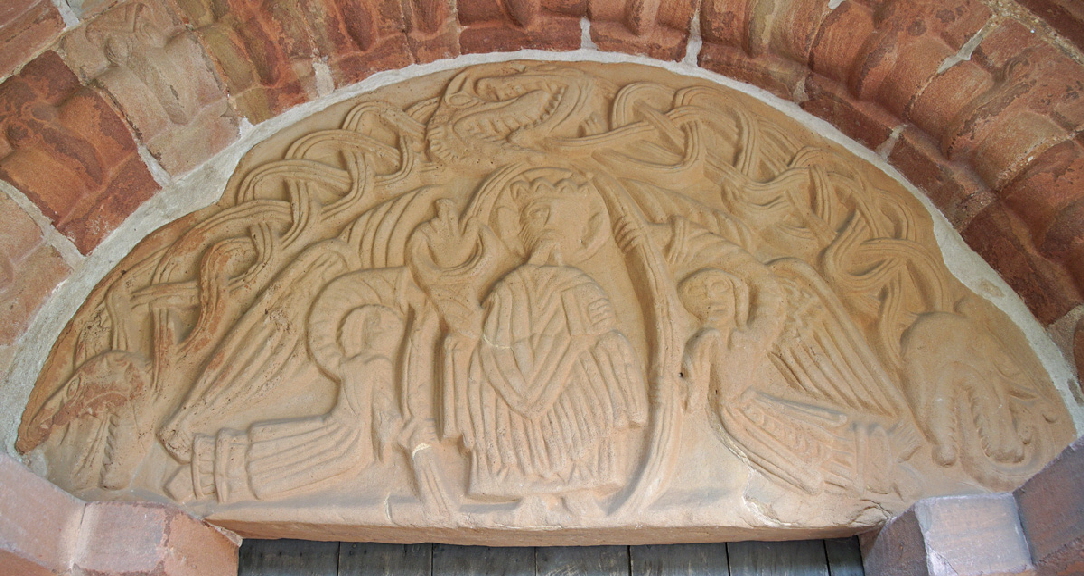 |
|||||
|
The “bad” tympanum. Christ in Majesty framed by a mandorla is making his benediction. Angels cling to the sides of the mandorla. There are clear parallels with the imagery at Rowlestone although it is true that the carving here seems to be less fine. The outer decoration is of irregularly-looped interlace work with dentally very well-endowed dragons. You are going to have to make up your own minds whether Zarnecki, Pevnser and Thurlby are justified in their put-downs. I think that it stands up well against most Norman tympana in England but these three commentators were heavily invested in the perceived “specialness” of the Herefordshire School and are thus judging it against the very highest standards. Did the Herefordshire School amount to just two master craftsmen? Or was it not as simple as that? Note that running around the outside of the main motif is a course of beakhead decoration, the only complete one in the county. |
|||||
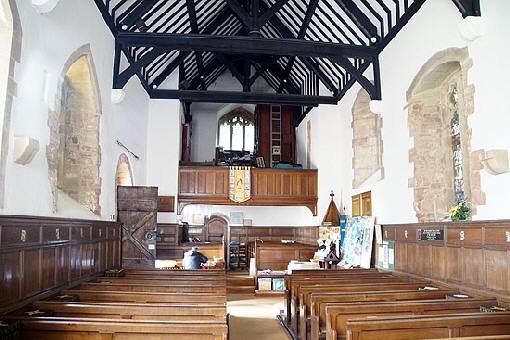 |
|||||
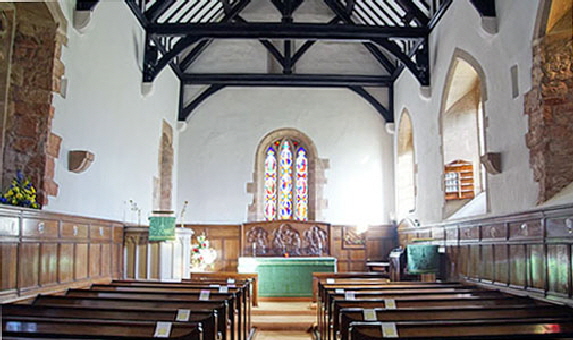 |
|||||
|
Left: Looking towards the east. There is no separation between nave and chancel and the latter was remodelled in the fourteenth century. The east window, interestingly, was donated by W.E.Gladstone at the 1846 restoration. I haven’t been able to find out why. Right: Looking towards the west where the west gallery has survived. |
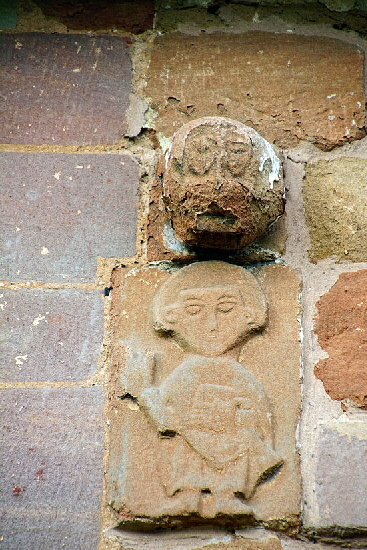 |
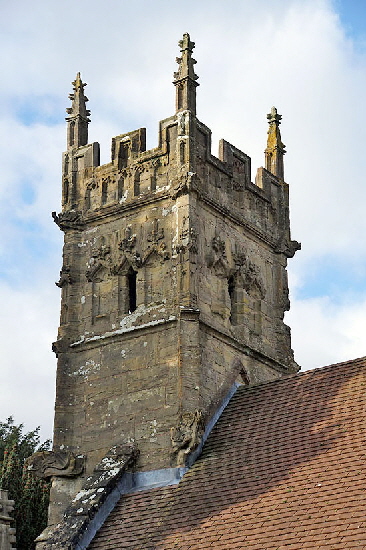 |
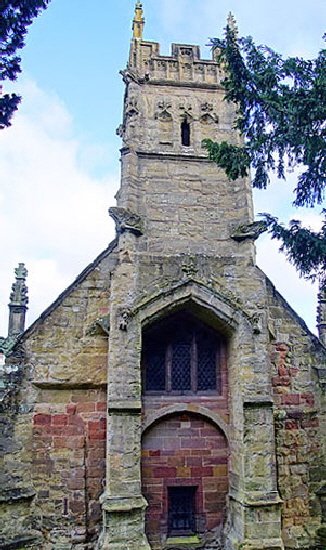 |
|
Left: The “small bad figure of a saint” (surely Kenelm?) that looks pre-Conquest although there is no records of a stone church at that time. Centre: The west tower is quite elaborate for a chapel. The weathering at the west end has been extreme and has left all of the carvings soft edged and blurry. Right: The church from the west end,. It is mighty peculiar, isn’t it? There is a mixture of grey stone and red sandstone and the masons obviously decided very wisely to integrate large buttresses into the design. It is surprisingly grand (albeit a little anorexic) with ogee arched niches and elaborately decorated parapets. |
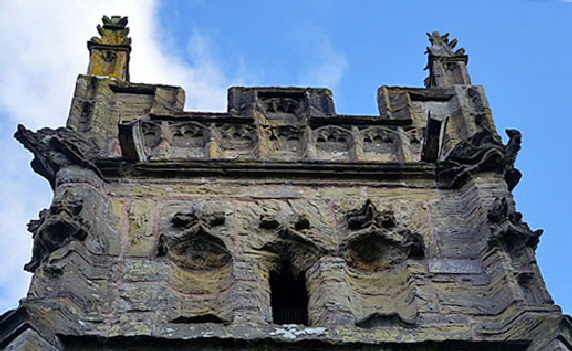 |
|||||||||||||||||||
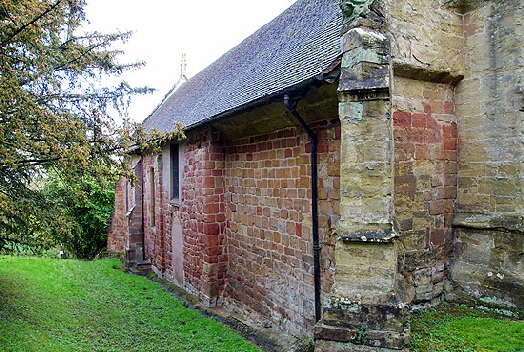 |
|||||||||||||||||||
|
Left: The degree of weathering is very obvious in this picture of the top of the tower. The ambition of the masons, however, is very evident. Right: The north side clearly shows that the original Norman building was made of local sandstone. The need for buttressing is painfully obvious. Note the blocked north doorway. |
|||||||||||||||||||
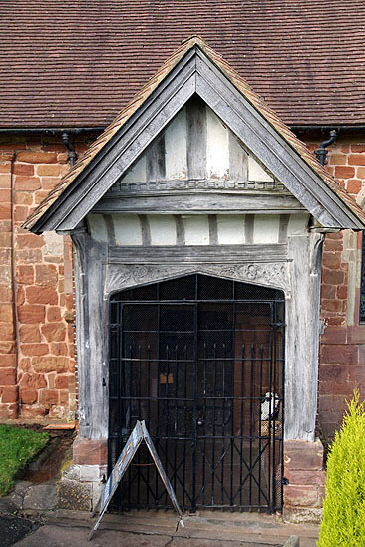 |
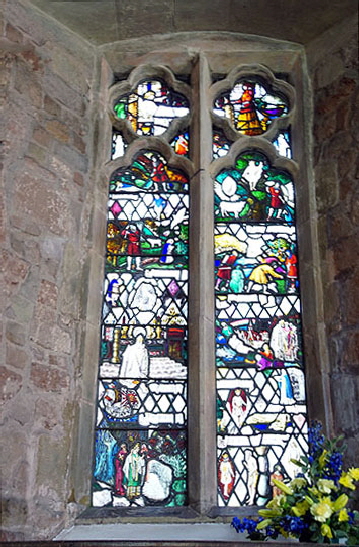 |
||||||||||||||||||
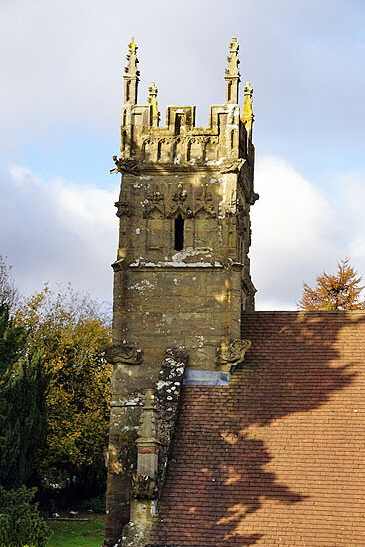 |
|||||||||||||||||||
|
Left: The attractive timbered south porch. Centre: This modern window depicts the life of St Kenelm. Right: Another view of the west tower from the south, |
|||||||||||||||||||
 |
|||||||||||||||||||
|
The attractive wooden carvings in the spandrels of the porch doorway. |
|||||||||||||||||||
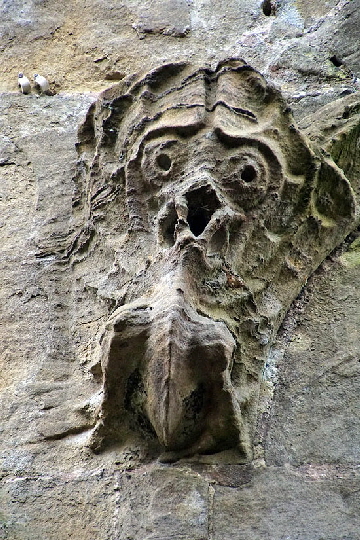 |
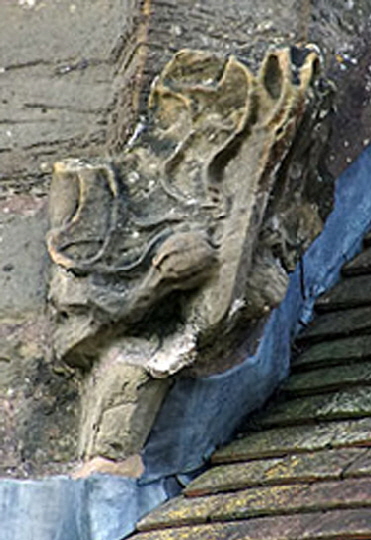 |
||||||||||||||||||
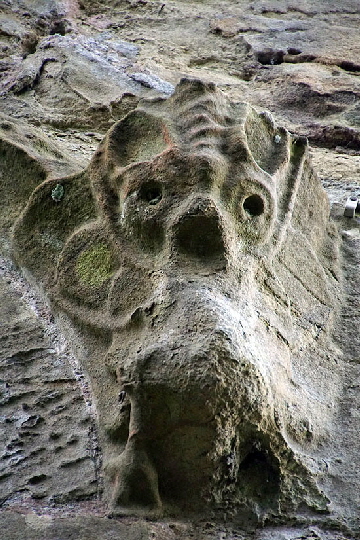 |
|||||||||||||||||||
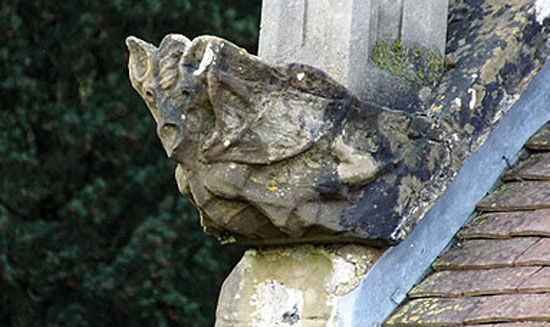 |
|||||||||||||||||||
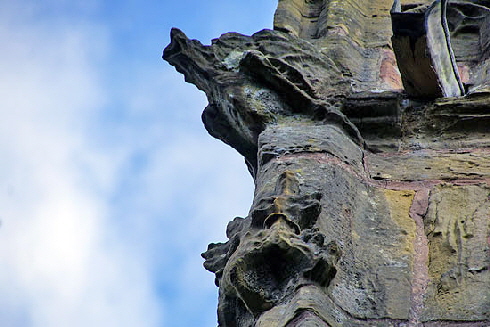 |
|||||||||||||||||||
|
The grotesques on the tower - I am not sure any of them are gargoyles in the literal sense of taking water away from the roof - are badly weathered but you can still see that they are both abundant for a small church and very large. As always it is anybody’s guess what they are meant to represent but I would venture to suggest that the two left had images in the top row represent elephants. Look at the ears, and is that a trunk on the creature on the left? On the other hand the creature bottom right had dragon-like wings but very unusual face and ears. These boys don’t get a lot of attention from other writers but I think they are rather special and it is a great pity that they are steadily rotting away. This, I am afraid, is part of the industrial West Midlands and god knows how much acid rain has descended on this church over the last two or three centuries. |
|
|
||||||||||||||||
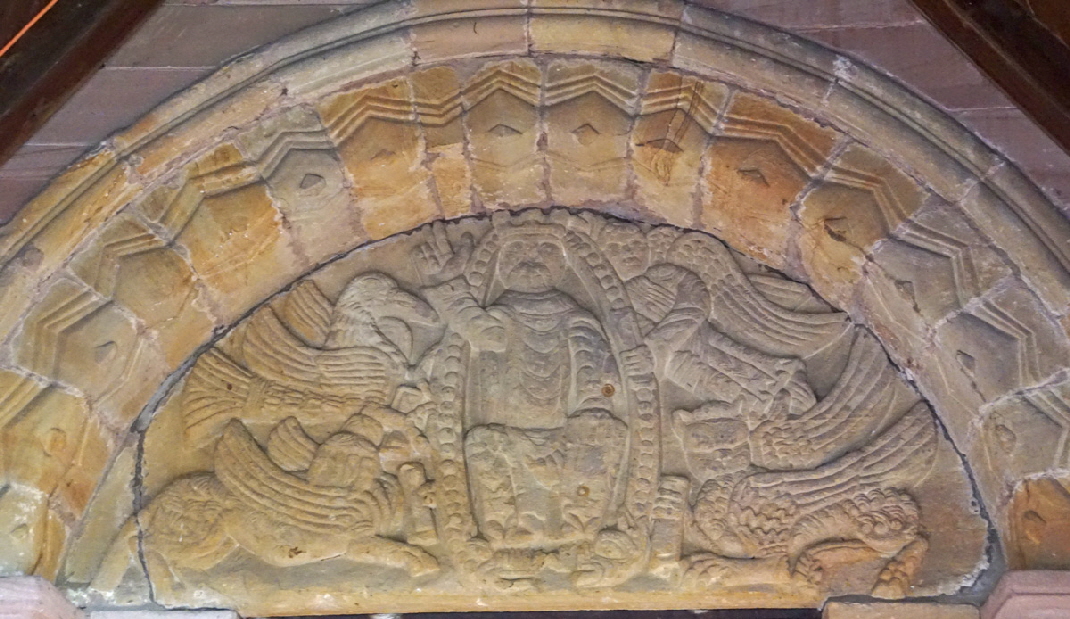 |
|
Thurlby puts the tympanum within his chapter entitled “Other Work”. He doesn’t mean that every location within that chapter is of doubtful provenance. The organisation of the book - indeed one of its main themes - is about the putative patrons of the work so much of the “Other Work” is there because he can’t ascribe it to one of the named patrons. Such gems as Chaddesley Corbett and Fownhope are there too. Nevertheless, as previously noted, his doubts are not hard to detect where Pedmore is concerned. Personally, I am at a bit of loss to understand his ambivalence. The theme of Christ in Majesty is a Herefordshire one, the large birds are pure Herefordshire School designs. The evangelists are there in their zoomorphic forms - note their clutching their gospels - again with faces of definite Herefordshire forms. This tympanum is by the Herefordshire School and personally I don’t give a fig for Zarnecki’s and Pevsner’s reservations. I understand the “problem” of Romsley’s tympanum and I can’t help wondering if the doubts about Pedmore are because if it is genuine it might add weight to Romsley’s tympanum also being by the School. On balance I believe it is quite likely that it is but, as I have said previously, I am prepared to entertain the notion that it was carved by someone associated with rather than by the two great “masters”. |
